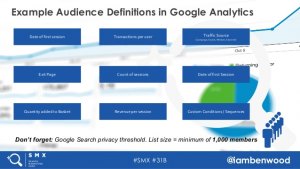Black Friday Lessons Learned From 2020
Black Friday 2020 broke online records. Adobe Analytics reported that sales topped $9 billion on Black Friday, revealing the rate at which consumer shopping habits evolve. Mobile orders increased by a massive 25.3% year-over-year, with 40% of all ecommerce sales coming from smartphones. Understanding the ways that consumers approached the shopping holiday will give retailers a head start on 2021.
While it has been a challenging year for all, shoppers initially held back on spending through these times of economic uncertainty and placed more emphasis on leveraging key sales dates, while retailers faced unprecedented pressure to maximize the holiday period following a year of mass disruption.
Starting with search
This year, the first thing that consumer search trends for Black Friday revealed was a change of mindset toward the upcoming holiday. Searches in September were predominantly done to ask whether Black Friday sales were going to take place, as the serious effects of the pandemic accelerated.
As October rolled in, things changed. Instead, consumers began to search on when and where the sales would take place. On Amazon, we saw 125% more searches for “Black Friday deals 2020” compared to just searches for “Black Friday.”
Consumers used October to research and plan their shopping.
Searches for Black Friday increased by 388% from September into October, with the latter boasting a 60% increase year-on-year compared with 2019. The volume escalated rapidly as the holiday drew nearer.
Consumers have traditionally used Black Friday as the moment to go for big-ticket electronics and household goods — and early search trends showed that this was amplified to a new level this year.
Increasingly, consumers are using search to compare deals using terms such as “Walmart/Best buy/Home depot black Friday TV deals” — marginal increases in share of search can lead to lucrative results for retailers if they can capture consumer dollars on these big-ticket items.
Optimizing for Black Friday success
If consumers are preparing for Black Friday earlier, then retailers need to be even further ahead of them. The best time to begin planning for Black Friday, therefore, is to evaluate what worked immediately after the event, and adjust strategies accordingly.
Retailers need to have a Black Friday Hub onsite months before deals go live. These pages act as a placeholder to capture searchers and inform them of information and details about upcoming sales, including the product categories that will be on sale — as well as providing a strong route to capture email sign-ups.
Once created, retailers should keep a top-level Black Friday page live throughout the year, changing the content depending on the season.
This is how the structure may look for an electronics company, for instance:
Black Friday page (out of sales period)
Outside of sales seasons, Black Friday pages should have content that reflects last year’s sales, answers common FAQs, and pushes users toward the main site by linking to any current deals or promotions.
Two of the most common search terms around Black Friday are “when is Black Friday?” and “why is it called Black Friday?”. Retailers can gain valuable SEO ranking by answering these generic queries.
It is equally important to ensure all meta-data is updated to include the latest sale year — e.g., “Black Friday 2020.”
Content must be updated to reflect what is important at the time, but keeping the page live throughout the year improves SEO rankings when searches begin to pick back up.
Approaching the sales period
As the sales period approaches and search volumes soar, it’s important to adjust content on the site to provide more details about Black Friday plans, deals and dates. This should include email sign-up prompts that encourage consumers to sign up in order to get the latest deals and news.
This is also where retailers need to associate themselves with the high-value categories such as TV and electronics, and provide teaser links as to upcoming deals.
It is important to keep the generic FAQs around Black Friday on this page, as they still attract large volumes of search — but move these answers toward the bottom and keep the main stage clear for promotions, as in the example below.
During the sale
When the sale hits, retailers must ensure that content quickly connects with what users are looking for. Clarity and ease of use are huge assets in the battle for commerce.
The Black Friday just ended was a huge day for digital sales, and search is a key battleground for retailers in their mission to reach consumers.
But while the battle itself doesn’t start until November 27th, the war continues throughout the year. The retailers who will reap the biggest rewards from Black Friday are the ones who learn from previous events and put in the preparation now.
(42)
Report Post





